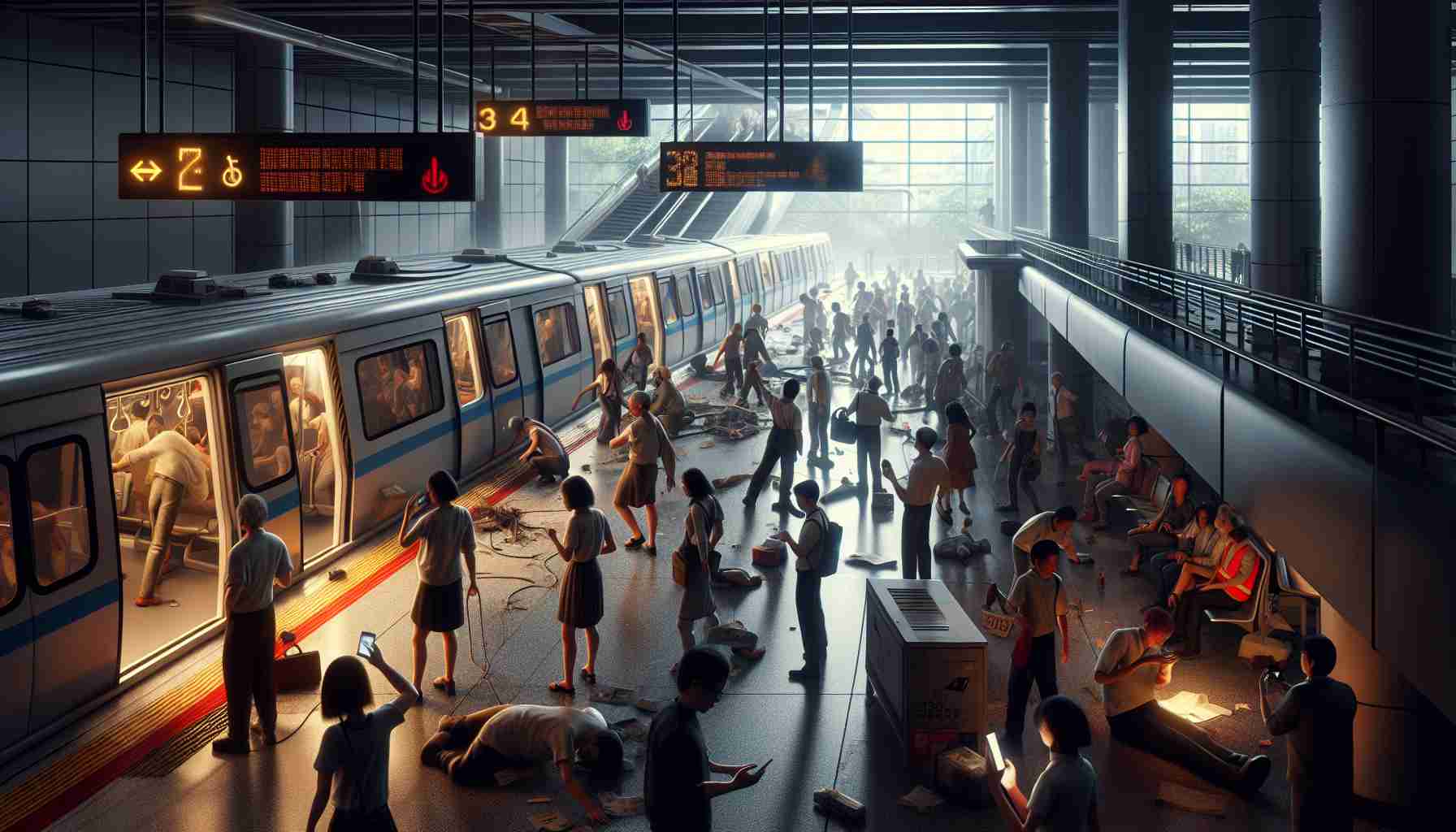A recent incident on the Shenzhen metro system left passengers in disarray as the power suddenly went out, plunging several stations into darkness.
Passengers were caught off guard as lights, air conditioning, and escalators ceased to function, leading to a chaotic situation during peak hours. The blackout affected not only Line 7 but also Line 1, Line 2, Line 4, Line 5, and Line 12, causing overcrowding and frustration among commuters.
Videos captured the eerie scene inside the stations, with only a few emergency lights providing minimal illumination. Passengers resorted to using their mobile phone flashlights to navigate through the darkness as temperatures rose due to the lack of air conditioning.
Inconvenienced by the outage, passengers also faced communication challenges as mobile signal reception was disrupted, leading some to believe their phones were malfunctioning. The situation was exacerbated by malfunctions in equipment such as escalators, further adding to the passengers’ ordeal.
While the exact cause of the power outage was attributed to a substation tripping, resulting in disruptions across multiple metro lines, authorities advised passengers to seek alternative means of transportation. Fortunately, normal operations have since resumed at the affected stations, bringing relief to commuters.
As investigations continue into the incident, authorities are emphasizing the importance of maintaining a reliable and efficient metro system to ensure the safety and comfort of passengers.
Additional Facts and Analysis on Shenzhen Metro Power Outage
Following the recent power outage incident on the Shenzhen metro system, several key questions arise regarding the reliability and preparedness of the transportation network.
1. What are the main challenges associated with power outages on the metro system?
– One of the primary challenges is ensuring the safety and well-being of passengers in such situations. The sudden loss of power can lead to not only inconvenience but also potential risks if emergency procedures are not adequately implemented.
2. What are the key factors contributing to power outages on the metro?
– Power outages may stem from a variety of issues, including equipment failures, outdated infrastructure, inadequate maintenance protocols, or external factors such as inclement weather or system overload during peak hours.
3. What are the advantages and disadvantages of the metro system’s response to the outage?
– Advantages include the prompt restoration of normal operations and the implementation of alternative transportation options for affected passengers. However, disadvantages may include communication gaps, lack of sufficient emergency lighting, and potential delays in addressing the root cause of the outage.
While the current incident has been resolved, ongoing concerns persist regarding the metro system’s resilience to unforeseen disruptions and the overall preparedness of authorities to handle such events efficiently.
For further insights on metro system operations and emergency response protocols, visit Shenzhen Metro’s official website at www.szmc.net.
It is imperative that comprehensive measures be taken to prevent similar incidents in the future and to prioritize passenger safety and convenience in the face of unforeseen challenges.
























